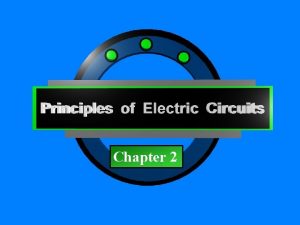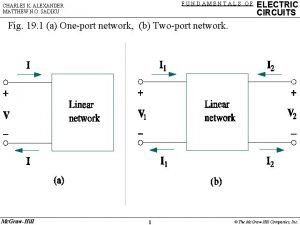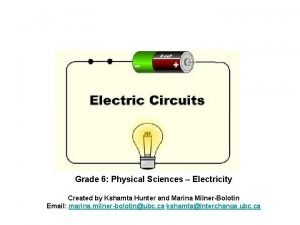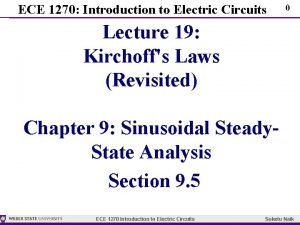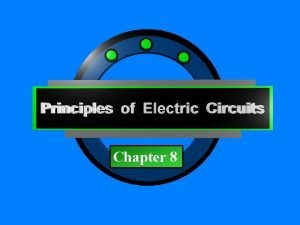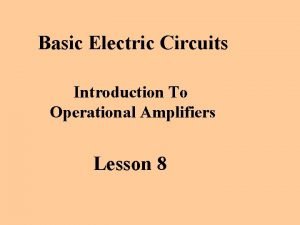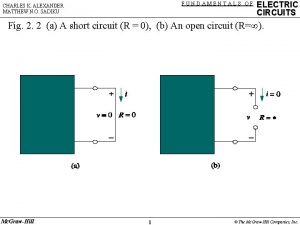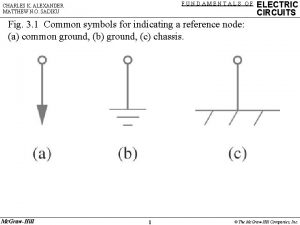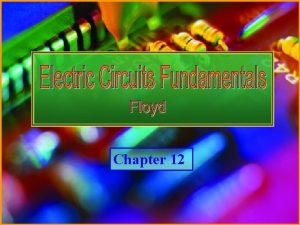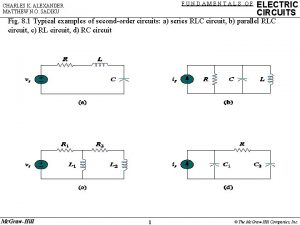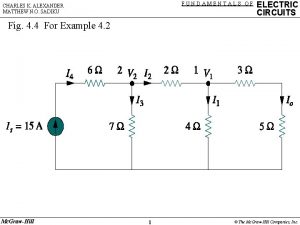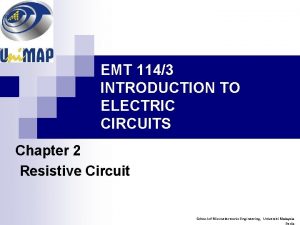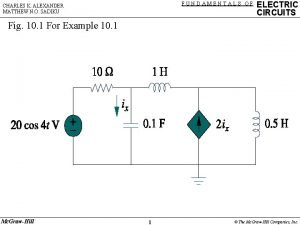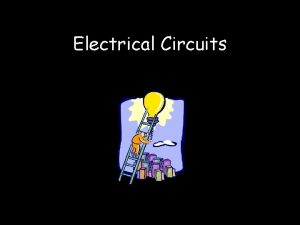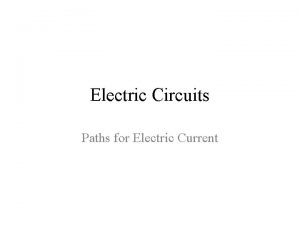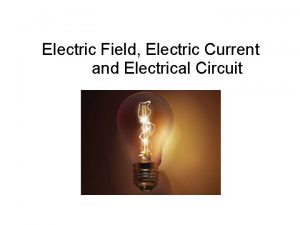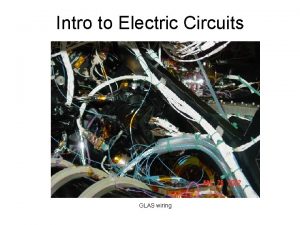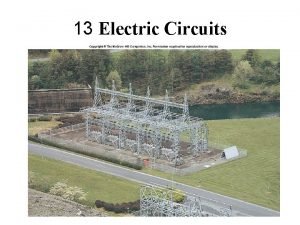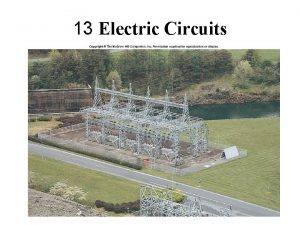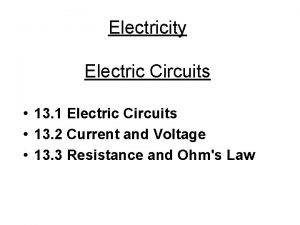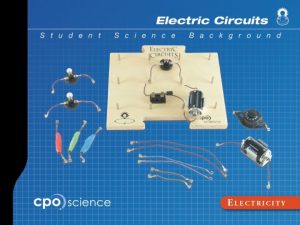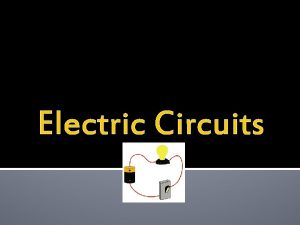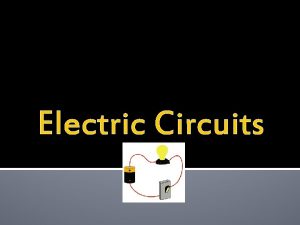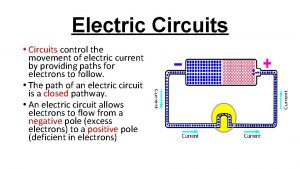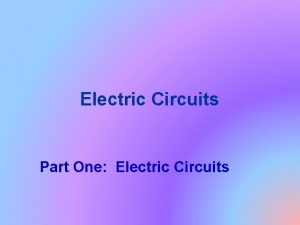16 5 Electrical Circuits Electrical Circuits An electric





















- Slides: 21

16. 5 Electrical Circuits

Electrical Circuits • An electric circuit is a complete path through which a charge can flow. • For the charge to flow, the path must be a complete loop.

Circuit Diagram • Circuit diagrams use symbols to represent parts of a circuit, including a source of electrical energy and devices that are run by the electrical energy. • In a simple circuit a battery provides the energy to operate a device such as a bell or a light bulb. • A circuit diagram shows the possible complete paths in which charge can flow.

Circuit Diagram In the figure below, show an electrical circuit. The “+” and the “-“on the battery indicate the positive and negative terminals. Arrows show the direction of current, from negative to positive. (Remember; the charge flowing thru the circuit is the electrons which has a “-“charge. )

Circuit Diagram

Series Circuits • In a series circuit, charge has only one path through which it can flow. • If one element stops functioning in a series circuit, none of the elements can operate.

Series Circuits Example: Old Christmas Tree Lights

Series Circuits

Parallel Circuits • In a parallel circuit, electric charge has more than one path that it can flow • If one element stops functioning in a parallel circuit, the rest of the elements still can operate.

Parallel Circuits Example: New Christmas Tree Lights

Parallel Circuits

What kind of circuit? 12

What is the difference between a series and parallel circuit? Series: Only one path for the current to flow Parallel: More than one path for the current to flow.

18. 4 Assessment Question #1 Identify each circuit as either a series circuit or a parallel circuit.

18. 4 Assessment Question #2 Identify each circuit as either a series circuit or a parallel circuit.

18. 4 Assessment Question #3 a. Identify the type of circuit b. Using Ohm’s Law, calculate the current in the circuit.

18. 4 Assessment Question #4 Name two elements that are included in a circuit diagram.

18. 4 Assessment Question #5 What is needed to make charge flow through a circuit?

18. 4 Assessment Question #6 Identify which of these components are connected directly in series with each other, and which are connected directly in parallel with each other

18. 4 Assessment Question #7 Draw a simple series circuit.

18. 4 Assessment Question #8 Draw a simple parallel circuit.
 Advantages of parallel circuit over series circuit
Advantages of parallel circuit over series circuit Principle of electric circuit
Principle of electric circuit Alexander
Alexander Chapter 20 electric circuits
Chapter 20 electric circuits Kshamta hunter
Kshamta hunter Ece
Ece Chapter 35 electric circuits answers
Chapter 35 electric circuits answers Principles of electric circuits 10th edition answer key
Principles of electric circuits 10th edition answer key Fundamentals of electric circuits chapter 4 solutions
Fundamentals of electric circuits chapter 4 solutions What three elements are required for all electric circuits
What three elements are required for all electric circuits Electric circuits equations
Electric circuits equations Alexander and sadiku
Alexander and sadiku Alexander
Alexander Quarturs
Quarturs James w nilsson
James w nilsson Electric circuits fundamentals floyd
Electric circuits fundamentals floyd Electric current
Electric current Sadiku
Sadiku Sadiku
Sadiku Fundamentals of electric circuits chapter 9 solutions
Fundamentals of electric circuits chapter 9 solutions Introduction to electric circuits
Introduction to electric circuits Alexander
Alexander

